Goal is to prevent falls and identify new biomarkers that are predictors of muscle and bone health
KANSAS CITY, Mo. — As we grow older, our bones and our muscles grow weaker. It is a simple, biological fact of life. Consequently, this weakening of bone and muscle makes us more susceptible to falls as we age. The risk of falling increases further with the onset of chronic conditions such as osteoporosis (diminished bone mass), which effects an estimated 25 million Americans and sarcopenia (diminished muscle mass and muscle strength), which afflicts approximately 30 percent of elderly Americans.
“According to statistics from the Centers for Disease Control, one out of three adults in the United States, age 65 and older falls each year,” said Marco Brotto, B.S.N., Ph.D., Professor and Director of the Muscle Biology Group (MUBIG) at the UMKC Schools of Nursing and Medicine. “And among those age 65 and older, falls are the leading cause of injury death and the most common cause of nonfatal injuries and hospital admissions for trauma.”
In the Kansas City Metropolitan area, the social and economic impact of falls mirrors that found nationally. To address the problem, Missouri’s Clay and Platte Counties have forged a Fall Coalition Prevention using the evidence-based program “Stay Strong, Stay Healthy,” developed by the University of Missouri Extension, as well as a number of other resources to promote awareness of this serious problem. The program provides strengthening classes for the elderly to help them decrease their risk of falls.
Brotto and his team, who have been researching various aspects of muscle damage and repair for years, recently partnered with Dr. Patricia Kelly, School of Nursing Professor and a community researcher, and the UM Extension and public health officials from Clay and Platte counties to use the “Stay Strong, Stay Healthy” program to create benchmarks and collect data on the effectiveness of the program. Over the past few months, Brotto and his colleagues have visited numerous nursing homes and senior centers in the two counties, offering muscle health education, recording muscle health and strength data and demonstrating simple muscle-strengthening exercises to elderly participants in the program.
“Our initial goal in meeting with these groups of senior citizens is to offer some basic information about muscle health and the risk of falling and establish some baseline measurements with regard to their current muscle strength and general health,” Brotto said. “Then we demonstrate for them a series of simple exercises and ask them to commit to a 10-week regimen of performing the exercises daily.”
This program is carried out by UMKC’s program partners and collaborators at the MU Extension and Clay County Senior Services. After the 10-week training period, the researchers will go back and reassess all participants.
“The combination of general health assessment, upper body muscle strength, and genes and proteins that are markers of muscle health and disease should provide us with insights into the effectiveness of the different exercise regimens being used by MU Extension and Clay County,” Brotto said. “We are also very excited because the pre- and post-exercise data might lead us into new ideas to promote muscle and bone health, prevent falls and improve the lives of millions of Missourians and Americans.”
Dr. Brotto’s colleagues in designing and implementing the program are UMKC researchers Eduardo Abreu, Leticia Brotto, Patricia Kelly and Keyna Chertoff; Clay County Senior Services Executive Director Tina Uridge; Elizabeth Jackson, Adult and Older Adult Program Manager, Clay County Public Health Center; and Glenda Kinder, Nutrition & Health Education Specialist, University of Missouri Extension.
About the UMKC School of Nursing
The UMKC School of Nursing offers a full range of education programs including a four-year bachelor’s degree (BSN), an RN-BSN, a Master of Science in Nursing (MSN), a Doctorate in Nursing Practice (DNP) and the Ph.D. in Nursing. Research at the UMKC School of Nursing is focused on Women’s and Children’s health and the school is a center of excellence in the provision of health care and education in these areas, emphasizing urban health care and wellness. For more information about the UMKC School of Nursing, visit nursing.umkc.edu/. You can also find us on Facebook and follow us on Twitter.
About the University of Missouri-Kansas City
The University of Missouri-Kansas City (UMKC), one of four University of Missouri campuses, is a public university serving more than 15,000 undergraduate, graduate and professional students. UMKC engages with the community and economy based on a four-part mission: life and health sciences; visual and performing arts; urban issues and education; and a vibrant learning and campus life experience. For more information about UMKC, visit www.umkc.edu. You can also find us on Facebook, follow us on Twitter and watch us on YouTube.
